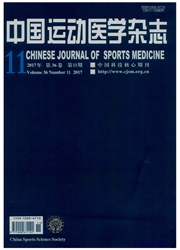

 中文摘要:
中文摘要:
目的:运用基因芯片技术研究6周有氧跑台运动对C57BL/6小鼠骨骼肌基因表达的影响,探究长期有氧运动引起小鼠骨骼肌组织的适应性改变。方法:本研究采用雄性C57BL/6小鼠20只,随机分为安静对照组(C)和有氧运动组(E),每组10只。运动组采用75%最大摄氧量强度的有氧跑台运动,1次/天,60分/次,5次/周,为期6周。实验后各组随机选取4只小鼠骨骼肌进行基因芯片分析。分离小鼠股四头肌,提取总RNA,经荧光标记后进行芯片杂交,利用芯片扫描仪记录荧光信号,并利用相关软件对所得数据进行分析,以发现组间差异表达具有显著性的基因。结果:6周有氧运动后,与对照组相比,有氧运动组共筛选出差异表达基因723个,其中,表达上调基因510个,表达下调基因213个;钙信号通路相关差异表达基因6个,其中Gna11和Pdgfra表达上调,Phka1、Plcd4、RYR1和Ppid表达下调。
 英文摘要:
英文摘要:
Objective To study the effects of 6-week aerobic treadmill exercise on the genes expression in skeletalmuscle of C57BL/6 mice. Gene array was performed and the data was analyzed to evaluate the adaptive changes atgene level caused by exercise. Methods Twenty male C57BL/6 mice were randomly divided into two groups:controlgroup(C)and aerobic exercise group(E). The mice from group E were forced to run on treadmill for 6 weeks. After 6weeks,all mice were fasted for 16 hours,and then sacrificed. Their flexor muscle was removed. 4 samples from eachgroup were analyzed with gene chips to dissect the differentially expressed genes between the two groups. Results Ourresults showed that 723 genes were differentially expressed in E group as compared with C group after the 6 weeksaerobic exercise,among which 510 genes were up- and 213 down-regulated. There were 6 differentially expressedcalcium signaling genes and 2 of which(Gna11 and Pdgfra)were up-regulated,while the others(Phka1,Plcd4,RYR1and Ppid)were down regulated.
 同期刊论文项目
同期刊论文项目
 同项目期刊论文
同项目期刊论文
 期刊信息
期刊信息
